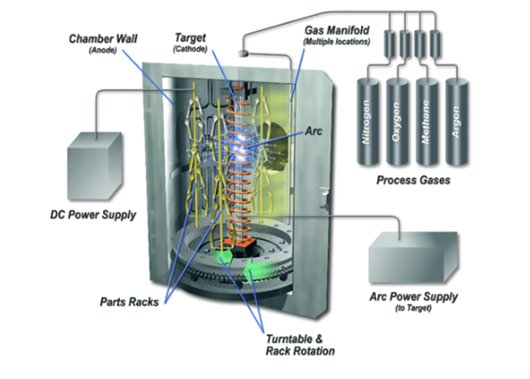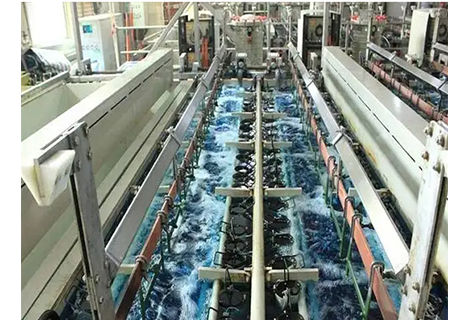The longevity of your bearings depends on the fit of the shaft and housing. A variety of shaft and housing fittings are available. The right match for your application will depend on a number of factors. Don't skip over the bearing fit selection process. An application that is poorly designed or that has been chosen incorrectly is doomed to failure.
Loosely fitted bearings can creep, or move unintentionally from or within their mounting location, or break. A fractured raceway may also result from a loose fit because the inner or outer rings are not supported. An excessively tight fit will result in a significant reduction in the efficiency of the bearing, a rise in operating temperatures, and an increase in ambient noise.
Reducing failures can be achieved by choosing the right bearing fit. Depending on the application, correcting the fit can potentially be extremely challenging. This usually means that the shaft and housing must be completely disassembled in order to be accessed. In the field, fixing a problem like this might be nearly difficult. Although bearing fittings are not glamorous, getting them correct can prevent annoying repairs.

To guarantee a correct installation, the following safety measures should be taken while mounting bearings on a shaft:
Check for Compatibility and Size
Make sure the bearing shaft size fits the specifications for the bearing body and shaft before installing. Verify that there are enough contact points and right-angled contact surfaces on the machined shaft with bearings.
Analyze the Bearing Surface
Examine the fine body of the bearing for any mold sand, dust, or abrasions on the corresponding oil surface. If required, use cleaning cloths or grinding stones.
Installing the Inner and Outer Rings at the Same Time
Use a backing plate and exert force on both rings at the same time when mounting the inner and outer rings. Because the balls press into the outer ring while force is only applied to the inner ring, this might result in scratches on the raceway surface.
Method of Installation
The most popular technique is to use a sleeve and hammer. After ensuring that the sleeve is centered, give it a quick tap with a hammer.
Force Outside the Ring
Make sure the bearing's outer ring is correctly pushed during installation onto the bearing body. A bearing's ability to endure external forces may be impacted, and track defects and noise may result from mounting or knocking on the outer ring of the bearing.
Complete Assembly
Follow the right and safe procedures to finish assembling the rolling bearings.
The outer ring and housing or the bearing bore and shaft are always able to move freely with a clearance fit, also known as a slip fit. The additional clearance usually makes installation simple. A bearing that creeps or spins on the shaft or inside the housing could cause issues if the fit is too slack, especially if there is vibration. This spinning will produce heat and cause the bearings to fail too soon.
The exact opposite of a clearance fit is called an interference fit. The press-fit fit is characterized by interference between the mating portion and the bearing ring. Either the bearing O.D. is greater than the housing bore, or the bearing bore is less than the shaft diameter. Because of this interference, the pieces will be difficult to assemble; in most cases, pushing them into place or using a heat fit will be necessary to make assembly easier.
A transition fit is, as its name suggests, in the middle of the two previously mentioned. Depending on the exact proportions of the bearing bore and shaft, or outer ring and housing, there may be either a clearance fit or an interference fit. The tolerances of two points of contact, either the housing and bearing O.D. or the bearing bore and shaft, will determine the final fit.
A shaft and housing fitting together will be uncommon. An interference fit is typically needed for the rotating ring, whereas a clearance fit is needed for the other fit. This interference fit is necessary for the rotating ring because, if the load was applied to a looser fit, there would be slippage, a decrease in efficiency, and ultimately fretting corrosion or surface damage. Applications that vibrate or tremble frequently deviate from the aforementioned generalization. Premature bearing failure can be brought on by incorrect fittings.
Inner ring rotation and constant radial loads are found in the majority of common applications. We advise an interference fit between the shaft and the bearing bore in these circumstances. A large load results in an increase in interference. A reasonable clearance fit between the shaft and bearing bore can be used when the shaft is at rest and the radial load is constant. For your reference, the particular actions listed below are available:

1.Analyse the requirements:
According to the application scenario and working condition requirements, determine the requirements for the shaft with bearing and mating parts in terms of accuracy grade, material type, type of fit (interference, transition, or clearance), and pre-loading.
2. Selection of fit tolerances:
Select the fit tolerances of shafts and mating parts according to the actual needs, and make sure that the selected tolerances are within the range of design requirements and actual manufacturing capacity.
3. Selection of material:
According to the use environment and load conditions of the shaft and mating parts, select the appropriate type and grade of material.
4. Heat treatment:
According to the selected materials and design requirements, heat treatment is carried out on shafts and mating parts to ensure that they have good mechanical properties and fatigue resistance.
5. Select suitable mating surfaces:
Select suitable mating surfaces according to the design requirements, and clean and inspect them.

6. Perform assembly test:
Assemble the shaft and mating parts together and perform appropriate preloading and testing to ensure the fit is correct.
7. Adjust preload:
If required, preloading devices can be adjusted to ensure proper preload between the shaft and mating parts to improve rigidity and stability.
8. Inspection and acceptance:
After completing the assembly, the shaft and mating parts are thoroughly inspected and accepted to ensure that they meet the design requirements and quality standards.
The operation process for determining the shaft is worth noting the following three points:
To avoid damage during the installation and removal procedure, use specialized equipment made for the purpose. Steer clear of utilizing inappropriate tools, such as copper rods, which can lead to bearing failure, rolling element damage, and deformation.
Examine worn bearings for burrs, scratches, and fractures on the surfaces of the ball and column. Make that the replacement bearings are the right kind, and compare the radial clearance to industry norms.
Oil overflow into the bearing and bearing chamber should be avoided as this may cause the rolling elements to slip and result in inadequate lubrication. To find the right oil volume for the bearing chamber, refer to the criteria based on the speed of the motor.
You can guarantee an accurate and dependable installation of bearings on a shaft by taking these safety measures.
It's possible and frequently the case that the fit of your housing and shaft differ. Similar to shaft fit, the ideal fit depends on a number of factors. The bearing's ease of installation or removal from the housing, the type of load, and the rotation of the inner or outer rings are all taken into account.
The inner ring of the bearing's rotation and its relationship to the radial load are the main factors to take into account. The choice of fit will also be influenced by the radial load amount. Avoid clearance fittings for unknown or variable load directions. To prevent distorting the outer rings of the bearing, use a clearance fit for applications with an axially split housing.
Consider yourself installing a bearing in a device for an electric motor. What kind of housing fit and shaft are you looking for? First, let's examine the details of the application. In this case, the outer ring is stationary, the imposed force direction is constant, and your inner ring rotates.
To be more precise, let's employ the following measurements: A 6204 ball bearing (0.787402" x 1.85039") (I.D. x O.D.) is attached to a 20mm shaft. Since the inner ring is the one rotating in this situation, you'll need an interference fit on the shaft. For the housing bore, a transition fit makes the most sense because it will facilitate both installation and removal with less difficulty.
Consult the application for information before choosing a housing or shaft fit. With a committed staff of experts, Richconn has all the data required to assist you in precisely identifying the recommended tolerance range for any application.
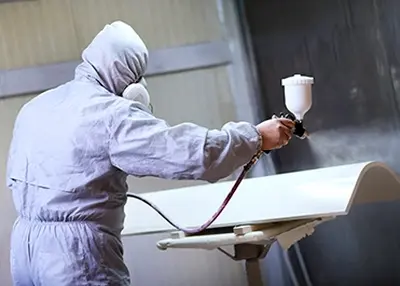 What Is the Failure of a Mechanical Part? How Many Forms of Failure of Parts Are There?October 26, 2023When the mechanical parts in the design of the predetermined period and under the specified conditions, can not complete the normal function, it is called failure. General mechanical parts failure form is based on the failure of the external morphological characteristics to the classification, including: wear failure, fracture failure, corrosion failure and distortion failure.view
What Is the Failure of a Mechanical Part? How Many Forms of Failure of Parts Are There?October 26, 2023When the mechanical parts in the design of the predetermined period and under the specified conditions, can not complete the normal function, it is called failure. General mechanical parts failure form is based on the failure of the external morphological characteristics to the classification, including: wear failure, fracture failure, corrosion failure and distortion failure.view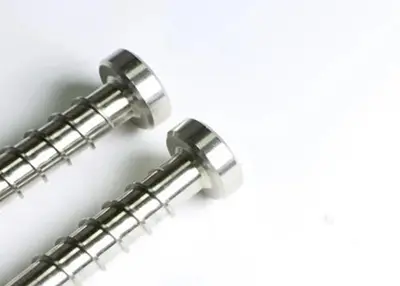 The Ultimate Guide to Different Types of Screws 2024January 10, 2024Screws are one of the most common fasteners in the world. Let’s discover various types of screws, materials, and applications. Get tailored excellence in fastening solutions!view
The Ultimate Guide to Different Types of Screws 2024January 10, 2024Screws are one of the most common fasteners in the world. Let’s discover various types of screws, materials, and applications. Get tailored excellence in fastening solutions!view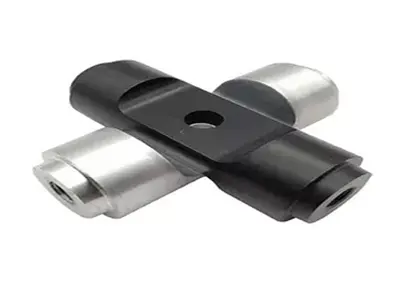 Protect, Enhance, Beautify: The Versatility of Blackening Surface TreatmentsDecember 4, 2023Surface treatments play a vital role in maintaining and enhancing the durability and appearance of various materials. Whether it is for aesthetic purposes, rust prevention, or to improve wear resistan...view
Protect, Enhance, Beautify: The Versatility of Blackening Surface TreatmentsDecember 4, 2023Surface treatments play a vital role in maintaining and enhancing the durability and appearance of various materials. Whether it is for aesthetic purposes, rust prevention, or to improve wear resistan...view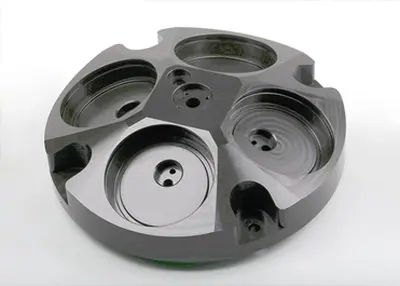 Understanding the Properties of Anodizing Process in One ReadingApril 4, 2023Nowadays, the use of metal technology is quite popular, and many machines in the market have large metal parts. One of the surface treatment processes for metal is anodizing, which is very commonly us...view
Understanding the Properties of Anodizing Process in One ReadingApril 4, 2023Nowadays, the use of metal technology is quite popular, and many machines in the market have large metal parts. One of the surface treatment processes for metal is anodizing, which is very commonly us...view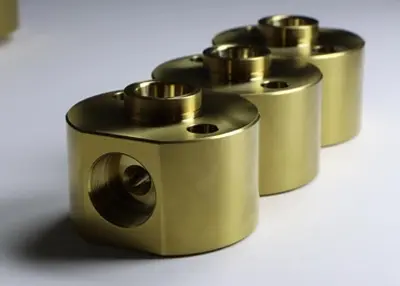 CNC Machining and 3D Printing - Friends or Foes?October 13, 2023The two technologies CNC machining and 3D printing have a major impact on many industries. But do they compete or complement each other?
Simply put, CNC machining is the inverse of 3D printing.view
CNC Machining and 3D Printing - Friends or Foes?October 13, 2023The two technologies CNC machining and 3D printing have a major impact on many industries. But do they compete or complement each other?
Simply put, CNC machining is the inverse of 3D printing.view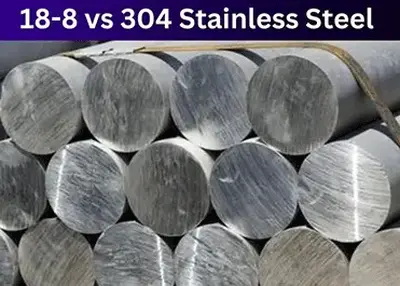 18-8 Stainless Steel vs 304: What's the Difference and Which One to Choose?December 7, 2023Stainless steel is one of the most widely used materials in the world, thanks to its excellent properties, such as corrosion resistance, strength, durability, and aesthetics. However, not all stainless steel grades are the same.view
18-8 Stainless Steel vs 304: What's the Difference and Which One to Choose?December 7, 2023Stainless steel is one of the most widely used materials in the world, thanks to its excellent properties, such as corrosion resistance, strength, durability, and aesthetics. However, not all stainless steel grades are the same.view
 EN
EN
 ru
ru 

